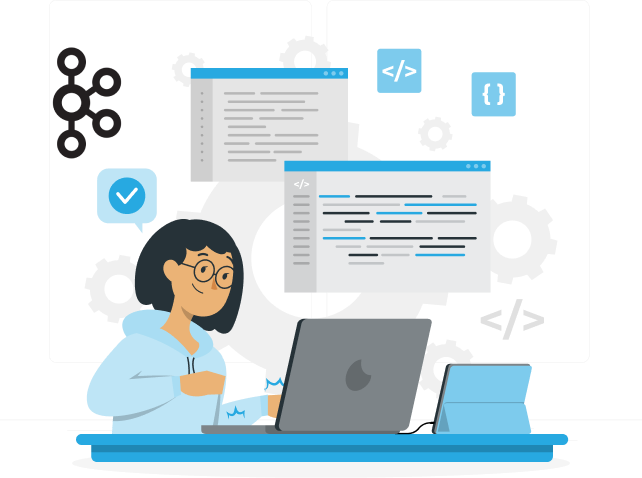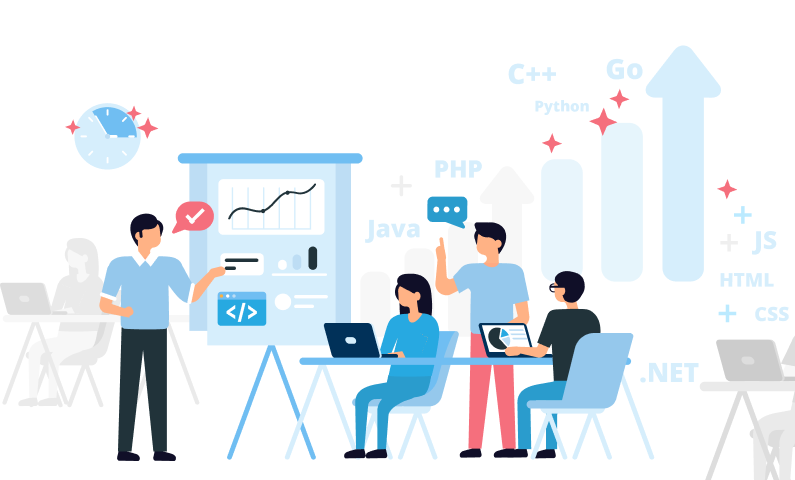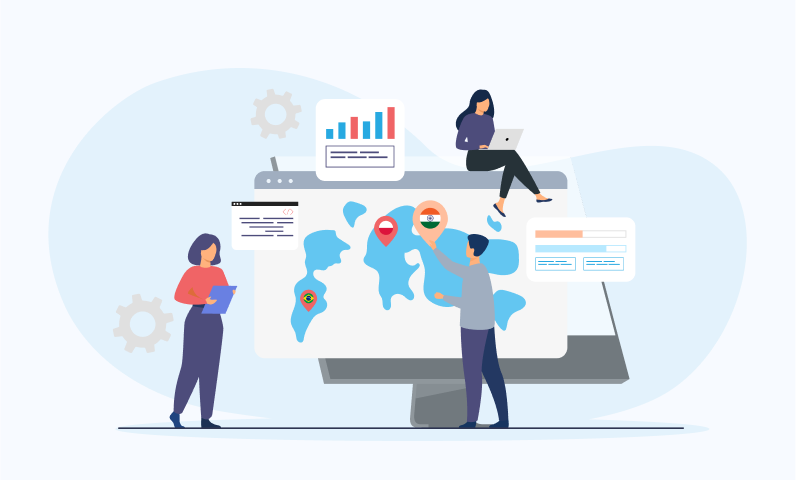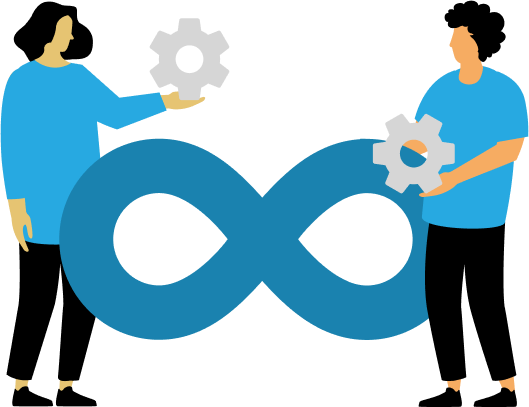By 2025, Backend as a Service, or BaaS, will be the next important phenomenon in the modern landscape of development. Businesses and developers of applications increasingly look for solutions that enable faster, scalable, and more cost-efficient construction of applications, and here enters BaaS as the real game-changer. Third-party providers can now make the complex backend management go away so that the application developers can focus on more user-friendly and feature-rich applications. We shall, therefore, discuss 15 major takeaways about BaaS and how it’s changing the development world in 2025.
1. BaaS: An Overview
Backend as a Service, or BaaS, is a cloud-based platform that delivers a pre-made backend structure for developers. It therefore simplifies the development process by providing core features including databases, authentication, server-side logic, and also cloud storage.
In the original model of development, application developers needed to handle and manage the backend servers and databases. On the other hand, BaaS abstracts most of this complexity and allows a developer to include prebuilt services into an application with minimal effort.
Real-Life Example:
Firebase is probably the most utilized BaaS platform that provides some sort of solution through a single API for various backend services such as a real-time database, authentication, and cloud storage.
2. Game Backend as a Service: Fueling the Gaming Industry
BaaS has revolutionized the way games are developed, allowing developers to offload the complexities of backend management and focus on the game itself. GBaaS platforms handle everything from user management to real-time data synchronization, matchmaking, and server maintenance.
Use Case:
Popular multiplayer games like Fortnite and Clash Royale rely on GBaaS platforms to manage server scaling, user authentication, and matchmaking, which would otherwise require significant resources to handle in-house.
Benefit:
By leveraging BaaS, game developers can scale their infrastructure automatically, ensuring a seamless experience for players even as user numbers increase or peak during busy times.
3. Mobile Backend as a Service (MBaaS)
It allows MBaaS, simplifying the whole backend for handling functionalities like data storage, push notifications, and user management in mobile apps. Therefore, MBaaS enables mobile application developers to focus all of their energy on creating front-end content while relying on third-party providers to set up and maintain the app’s back-end infrastructure.
Real-time Example:
Backendless and Kinvey are popular MBaaS providers that give developers the tools to manage app data, send push notifications, and enable user authentication across platforms like iOS and Android.
Use Case:
A startup that built a fitness app used MBaaS to quickly set up data storage and authentication, allowing them to focus on creating the user interface and launching their product in just a few months.
4. Frontend as a Service vs. Backend as a Service
BaaS delivers the backend infrastructure while Frontend-as-a-Service (FaaS) provides pre-built solutions that are used to create front-end applications. FaaS services speed up front-end development with reusable components, UI templates, and integrations to data sources.
Real-time Example:
Services like Vercel offer easy deployment for front-end applications. Often, services such as Firebase, being a BaaS solution, provide an ideal combination, making it easier for developers to build full-stack applications with minimum hassle.
Key Benefit:
By combining FaaS and BaaS, developers can rapidly deploy web and mobile applications without managing either frontend or backend infrastructure themselves, improving development cycles and reducing time-to-market.
5. Serverless Backend: The Future of Scalability
Serverless computing is a crucial part of BaaS solutions. With serverless, developers don’t need to care about provisioning or managing servers; they upload their code and let the BaaS provider handle the infrastructure automatically scaling it based on demand.
Real-time Example:
With AWS Lambda, developers can run their back-end code in response to numerous events, such as HTTP requests, without having to care for the underlying servers. It automatically scales and saves money, as developers only pay for the resources consumed at the time of execution.
Use Case:
An on-demand food delivery service company uses serverless computing for order management and payment processing. This has reduced its operational costs while ensuring that the system scales up appropriately during high-demand periods.
6. Integration with Database as a Service (DBaaS)
BaaS platforms offer DBaaS integrations, wherein developers can work with fully managed database solutions without concern for setup, backups, or scaling. DBaaS providers usually have high-performance fully managed databases and can access them via API.
Real-time Example:
MongoDB Atlas is a cloud database that allows developers to store and retrieve data without the complexities of managing the infrastructure. It is integrated into BaaS platforms to handle data storage and management in a seamless way.
Advantage:
Integration of DBaaS into BaaS platforms ensures that the data storage is secure, scalable, and highly available so that developers can focus on feature development rather than managing the backend infrastructure.
7. Easy Code Hosting with BaaS
The biggest benefit of BaaS, of course, is the ease of hosting. Unlike traditional servers and virtual machines, developers no longer deploy their applications onto these structures; instead, they will host their back-end code on BaaS platforms that automatically scale and address security measures.
Real-time Example:
Heroku, one of the popular BaaS providers, makes the deployment and hosting of applications easier by offering a PaaS model. Developers can simply push their code, and Heroku takes care of provisioning, scaling, and maintenance.
8. Faster Time-to-Market for Developers
BaaS accelerates time-to-market by providing developers with a pre-built infrastructure to handle common backend tasks. Instead of spending weeks or months developing server-side components, developers can integrate BaaS features like user authentication, data storage, and notifications into their applications.
Case Study:
A tech startup wanted to launch a mobile app for event management. It opted for Firebase as its BaaS platform, thus getting to market in four months, which would have otherwise taken them much longer to do if they had to build and maintain their backend systems.
Impact:
Using BaaS helps developers speed up development cycles, launch products faster, and respond to market demands more efficiently.
9. Cost-Effective with BaaS
BaaS means that a company is free from any development and operational costs involved in having a dedicated team of back-end developers and server infrastructure. Most providers of BaaS charge in terms of usage; hence developers only pay for the use of the resources.
Use Case:
A social networking app developed by a startup used a BaaS solution, which saved them 50% of the infrastructure cost. They didn’t need to manage servers and databases as they were able to get all their backend needs met through the platform’s managed services.
Advantage:
The pay-as-you-go model enables developers to scale up or down depending on demand so that they do not overspend on resources when there is low traffic.
10. Scalability and Flexibility
Scalability is seamless with BaaS. The developer does not have to worry about provisioning additional servers or load balancing as their user base grows. It can handle fluctuating traffic and ensure that services are always available with automatic scaling.
It could mean that, for example, this type of worldwide web-based store relies on BaaS to take its traffic peak on Black Friday and Cyber Monday. These millions of requests per minute without any intervention of a man were accommodated automatically.
Benefit:
BaaS ensures applications are always online, so they remain running while demand increases.
11. Security and Compliance in BaaS
Security and compliance are the prime concerns in the backend, especially for applications handling sensitive data. BaaS providers offer robust security measures like encryption, firewalls, and multi-factor authentication, ensuring that data remains protected.
Use Case:
A financial services app used a BaaS platform with built-in security features, such as end-to-end encryption and secure API access. This ensured the app complied with financial regulations while safeguarding user data.
With BaaS, developers can use built-in security measures without having to spend time trying to maintain regulatory compliance with industry regulations.
12. Integration with third-party services
One of the biggest benefits of BaaS is the ability to seamlessly integrate third-party services across a broad range of functionality. Whether integrating payment systems, social media logins, or analytics tools, BaaS allows for the easy connection needed to use the services at hand.
Use Case:
A real estate app used BaaS to integrate third-party mapping services and payment gateways. This allowed them to provide users with a seamless search experience while handling payments securely.
Benefit:
Third-party integrations help developers add rich features to their applications without having to build them from scratch.
13. Customizable Backend Solutions
BaaS platforms are highly customizable. Developers can configure the backend systems to meet their specific needs. This makes it possible for developers to fine-tune their backend solutions according to the application requirements and user demands.
Use Case:
A healthcare application used a BaaS solution that enabled them to create custom workflows for patient management. The flexible architecture of the platform made it possible to tailor the backend to meet HIPAA compliance.
14. Cloud-Native Backend Systems
BaaS platforms are native to the cloud, meaning they are optimized to perform in a cloud environment. Cloud-native backend systems bring forth better performance, scaling, and fault tolerance; thus, they can also help with faster updates and resource handling.
Use Case:
The improvements in load times, served content to users in real-time, and fewer outages on a social media application based on a cloud-native BaaS solution.
15. Future of BaaS: 2025 and Further Ahead
As we move towards 2025, BaaS will continue to evolve with emerging technologies such as AI and machine learning. New capabilities, such as predictive analytics, personalized content delivery, and autonomous scaling, will be increasingly available, making backend development even more seamless.
Future Trends:
- Integration with AI/ML for smarter automation and data processing
- Enhanced tools for managing microservices and distributed architectures
- More specialized services tailored to vertical industries like healthcare, finance, and e-commerce
Conclusion:
BaaS is changing the way developers develop applications. Backend as a Service enables developers to focus on delivering great user experiences by offering scalable, secure, and cost-effective backend solutions. The future, heading toward 2025, will be increasingly dominated by BaaS, as it evolves into more powerful tools and features that empower developers to build more complex, high-performance applications easily.
If you are a business looking to get started with Backend as a Service BaaS platform, we are here to help you with it. You can get in touch with us to take this forward.

Start a Project with Ajackus











































































